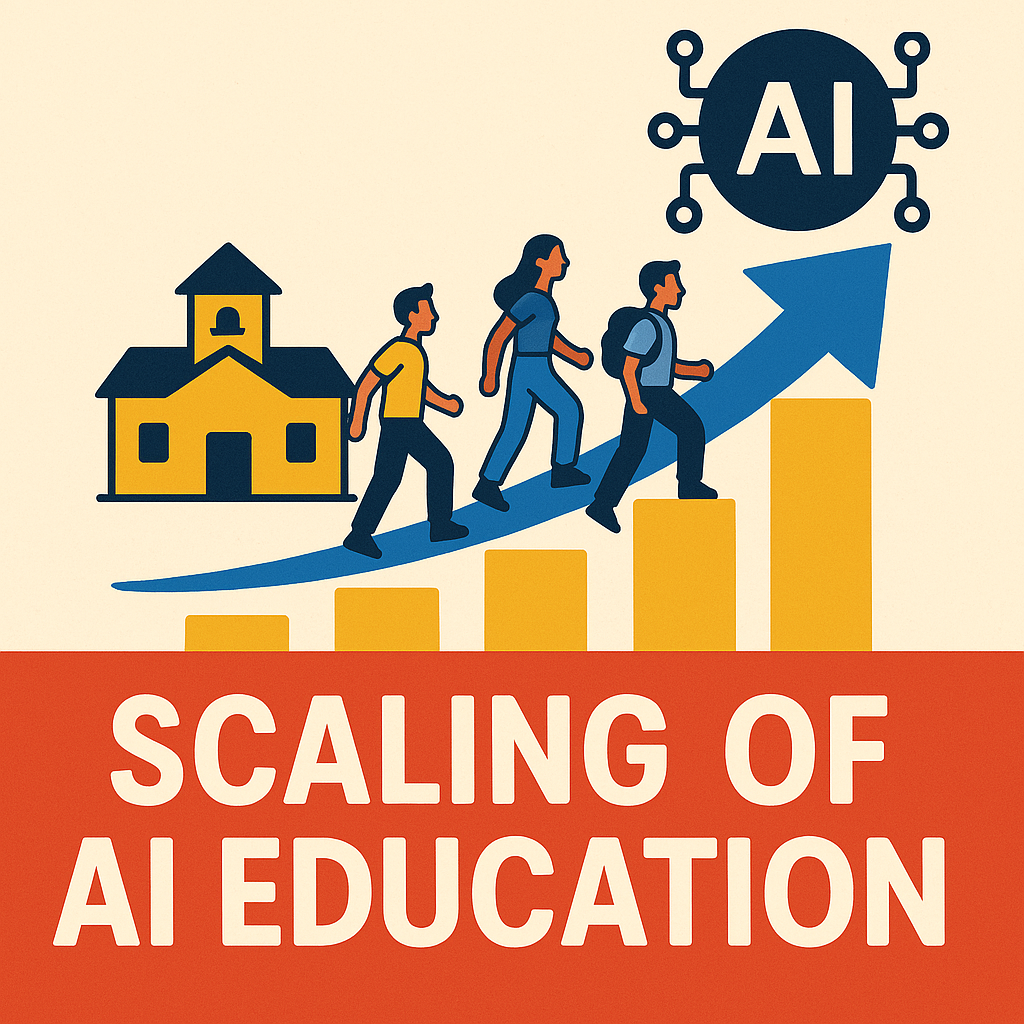
In Austin, Texas, Alpha School has embraced AI-driven tutoring, where students spend two hours each day learning with an AI tutor tailored to their individual pace and interests. The rest of their school day is devoted to life skills—public speaking, financial literacy, teamwork, and interpersonal development—while human educators serve as guides and mentors. The result? Students achieve higher learning outcomes with a more holistic education (Alpha School Overview).
Across the globe, in rural Nigeria, a similar AI-driven model is producing even more dramatic results. A recent study conducted by the World Bank found that just two hours of AI tutoring per day with GPT-4o enabled students to achieve the equivalent of two years of traditional education in just two months. This rapid acceleration of learning is a game-changer, particularly in regions with limited access to quality teachers and resources (World Bank Study).
Both cases validate a core argument of my book, University Revolution: Artificial Intelligence and the Transformation of Learning, which will soon be coming out: AI is not merely an enhancement to education—it is a necessary evolution. The ability to personalize instruction, prompt deeper thinking, and guide skill development every step of the way represents an opportunity too great to ignore. AI does what traditional schooling has struggled to do for decades—it ensures that no one is left behind.
But knowing AI’s promise is not enough. The question now is how do we scale it?
Step One: Run Experiments Everywhere
To prove the undeniable value of AI-driven education, we need as many real-world experiments as possible. Every city, every town, and every village needs its own Alpha School or Nigeria pilot program. Schools, nonprofits, and educational pioneers must test AI tutoring models—whether through structured school integration, after-school programs, or independent initiatives.
The more data we gather on AI’s ability to accelerate learning, improve consistency, and close educational gaps, the harder it becomes for policymakers and institutions to ignore. The future of education must be built on evidence, not speculation.
Step Two: Build an Open-Source AI Education Network
Once we have widespread proof of AI’s effectiveness, the next step is to develop an open-source education network—a concept I explore in depth in University Revolution.
This network should be a global platform where:
- Educators and institutions can openly share AI-powered curricula, lesson plans, and teaching methodologies.
- Developers can contribute open-source AI tutoring tools, ensuring that AI education is not controlled by a handful of private companies but instead remains accessible to all.
- Communities can document how they are implementing AI learning successfully and share best practices.
This is the only way to ensure that AI in education serves the many, not just the few. Just as the internet democratized access to information, an open-source education network would democratize AI-driven learning. Tools like Khanmigo have already put AI tutors in the hands of students, but we need a coordinated, collaborative effort to scale this impact.
Step Three: National Leadership and Policy Support
For AI in education to reach full scale, national governments must recognize its potential and take action. In the U.S., this means:
- Expanding AI access to every public school through federal funding or Department of Education initiatives.
- Training teachers on how to integrate AI tools into their classrooms effectively.
- Crafting legislation to ensure equitable AI implementation, preventing the technology from widening existing education gaps.
Other countries, especially those with limited educational infrastructure, have even greater opportunities to leapfrog traditional models and build AI-first learning ecosystems from the start.
Step Four: The Village of Early Adopters Must Lead
The transformation of education will not come from traditional institutions alone. It will come from early adopters—pioneers in every community willing to test, iterate, and showcase what works.
- Parents, teachers, and school administrators must push for AI experimentation in their own classrooms.
- Philanthropists and investors should fund AI-driven learning initiatives, knowing that every dollar invested yields exponential educational returns.
- Universities need to redefine their role, shifting from rigid content delivery to fostering life skills, vocational insight, and mentorship.
The Future of Learning is Here—Will We Seize It?
The evidence is mounting: AI is revolutionizing education. Schools like Alpha in Austin and experimental AI programs in Nigeria are proving that learning can be faster, more personalized, and more effective than ever before.
But we must not let AI in education become another fleeting trend or a privilege for the few. We have a responsibility to scale what works, to share knowledge freely, and to fight for AI-enhanced learning to be a reality for all.
The revolution is happening. The question is—who will lead it? Rather, who will join me?